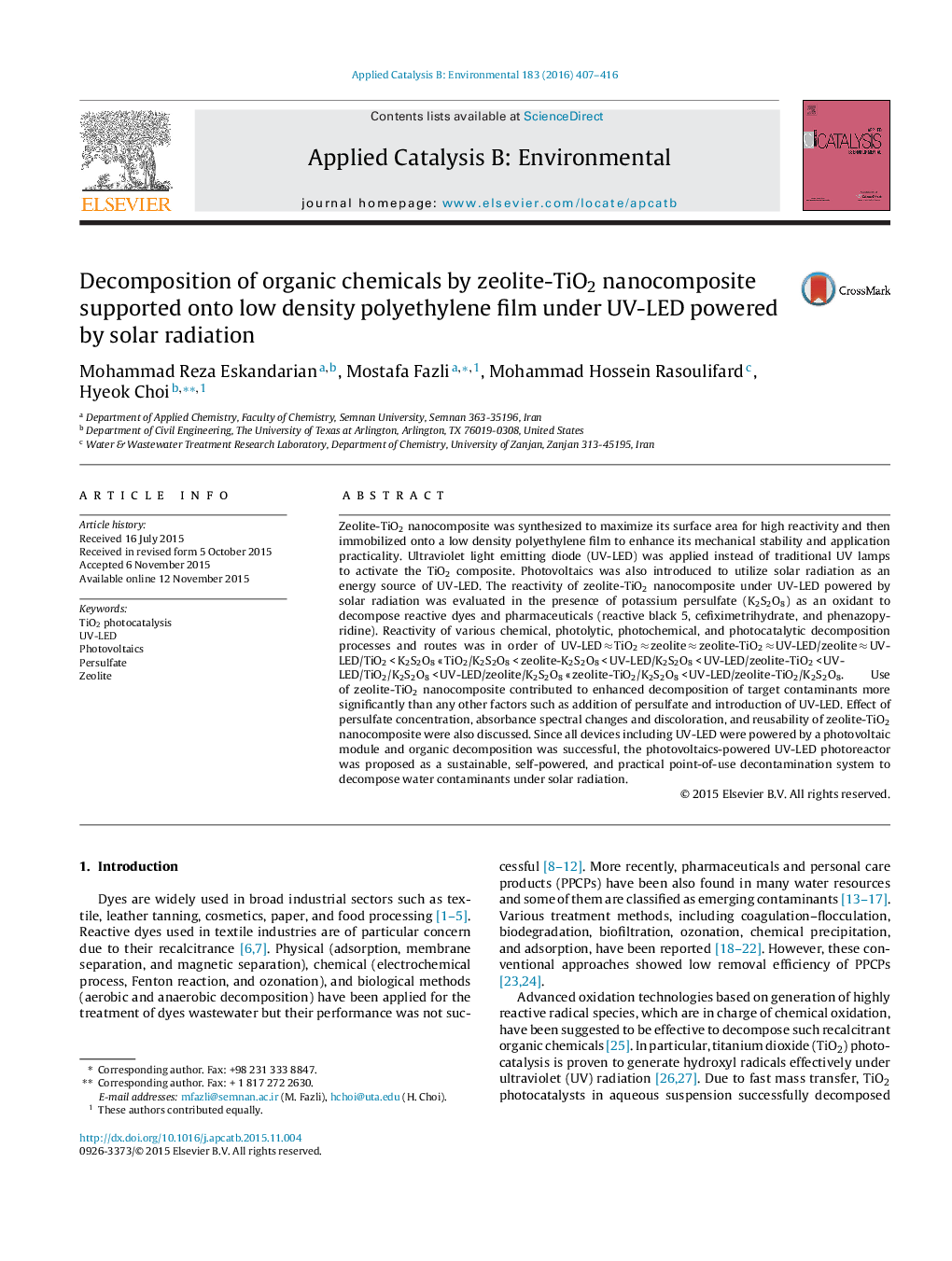| Article ID | Journal | Published Year | Pages | File Type |
|---|---|---|---|---|
| 45170 | Applied Catalysis B: Environmental | 2016 | 10 Pages |
•A sustainable, self-powered, and practical photocatalytic system was studied.•Zeolite-TiO2 nanocomposite was immobilized onto polyethylene film.•UV-LED was used to activate the nanocomposite film.•Photovoltaics was introduced to operate UV-LED and accessory devices.•The system effectively decomposed dyes and pharmaceuticals under solar radiation.
Zeolite-TiO2 nanocomposite was synthesized to maximize its surface area for high reactivity and then immobilized onto a low density polyethylene film to enhance its mechanical stability and application practicality. Ultraviolet light emitting diode (UV-LED) was applied instead of traditional UV lamps to activate the TiO2 composite. Photovoltaics was also introduced to utilize solar radiation as an energy source of UV-LED. The reactivity of zeolite-TiO2 nanocomposite under UV-LED powered by solar radiation was evaluated in the presence of potassium persulfate (K2S2O8) as an oxidant to decompose reactive dyes and pharmaceuticals (reactive black 5, cefiximetrihydrate, and phenazopyridine). Reactivity of various chemical, photolytic, photochemical, and photocatalytic decomposition processes and routes was in order of UV-LED ≈ TiO2 ≈ zeolite ≈ zeolite-TiO2 ≈ UV-LED/zeolite ≈ UV-LED/TiO2 < K2S2O8 << TiO2/K2S2O8 < zeolite-K2S2O8 < UV-LED/K2S2O8 < UV-LED/zeolite-TiO2 < UV-LED/TiO2/K2S2O8 < UV-LED/zeolite/K2S2O8 << zeolite-TiO2/K2S2O8 < UV-LED/zeolite-TiO2/K2S2O8. Use of zeolite-TiO2 nanocomposite contributed to enhanced decomposition of target contaminants more significantly than any other factors such as addition of persulfate and introduction of UV-LED. Effect of persulfate concentration, absorbance spectral changes and discoloration, and reusability of zeolite-TiO2 nanocomposite were also discussed. Since all devices including UV-LED were powered by a photovoltaic module and organic decomposition was successful, the photovoltaics-powered UV-LED photoreactor was proposed as a sustainable, self-powered, and practical point-of-use decontamination system to decompose water contaminants under solar radiation.
Graphical abstractFigure optionsDownload full-size imageDownload as PowerPoint slide
